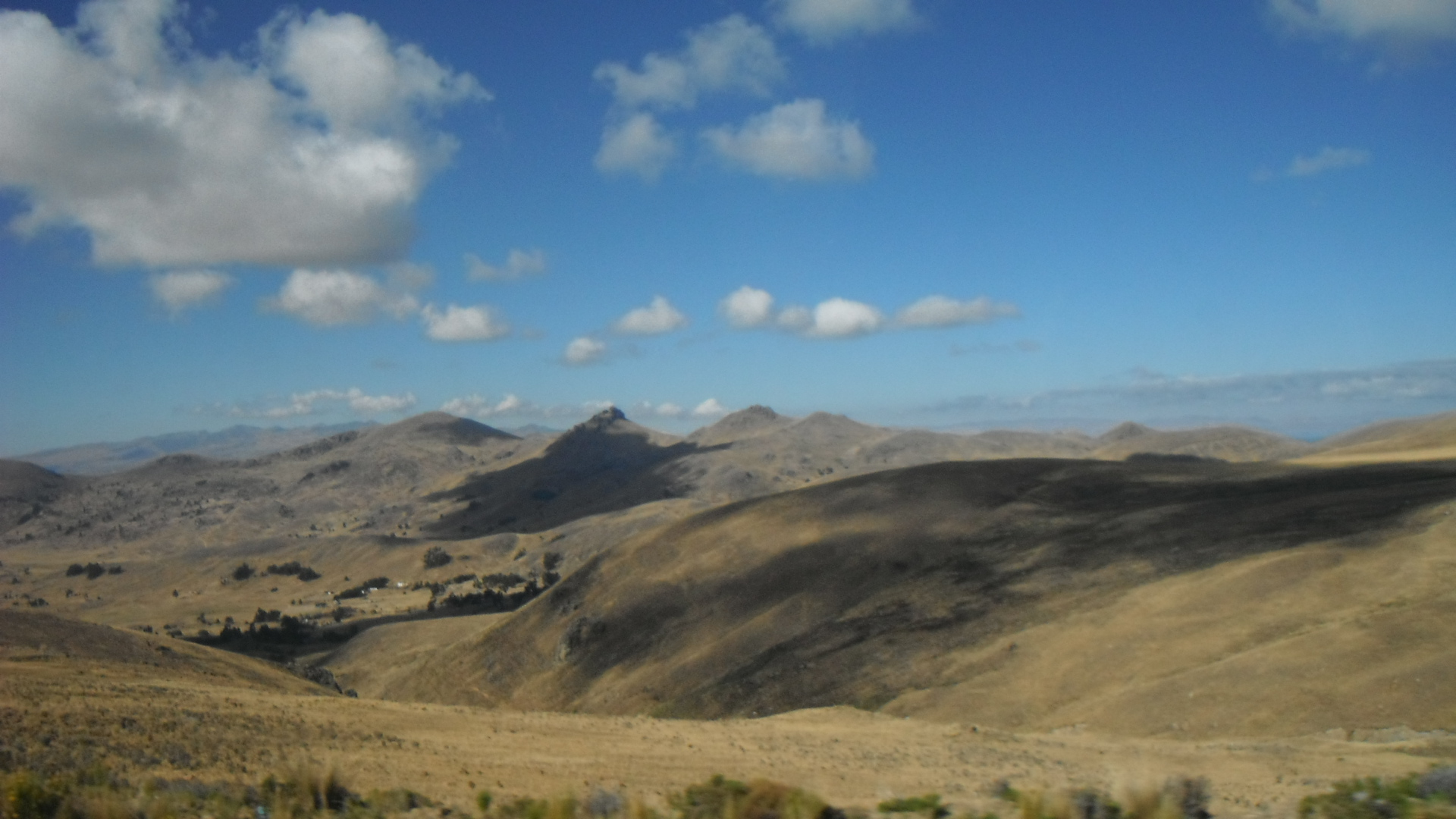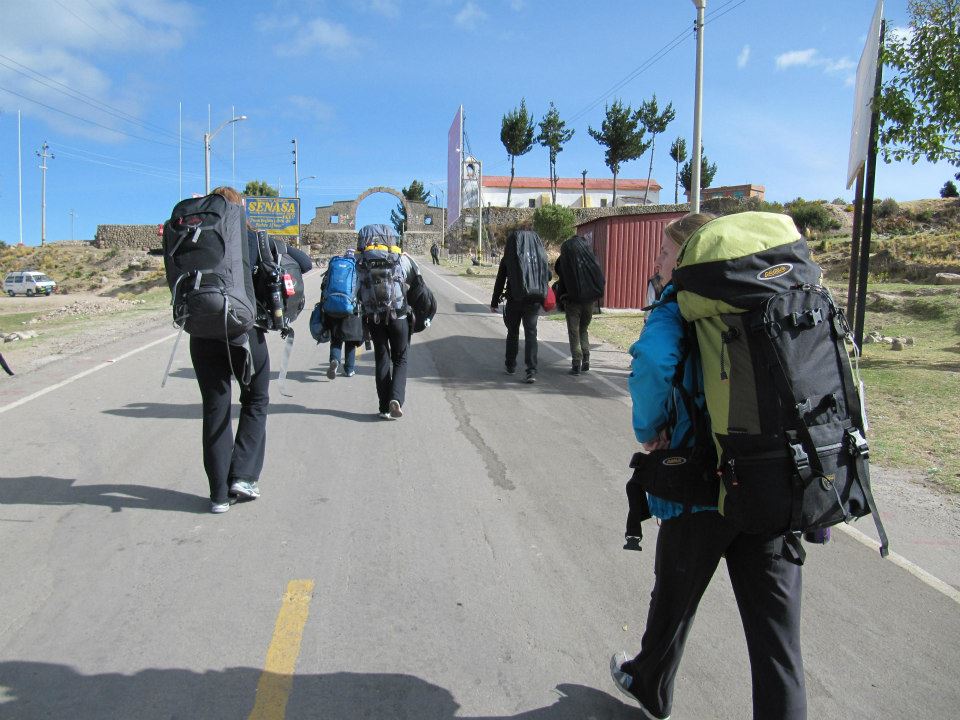We clamoured down from the top of our overnight bus, overtired and groggy, only to be unceremoniously spit outside into the blinding morning light. As the bus pulled away, we began to take in our surroundings – cold, dry and dusty. Mars, I thought to myself. We had officially landed on Mars.
—
There are two different routes into Bolivia from Peru: the first via the Kasani-Yunguyo border crossing, and the faster route via Desaguadero. Many of the security bulletins leading up to our crossing warned of potential political protests and road blockades along the southern route between Puno and Desaguadero, something we were eager to avoid. Most travellers we had met were travelling from Cusco through the tiny port town of Puno, known for its touristy island-hopping excursions on Lake Titicaca. Given that we were tight on time, we instead opted to take an overnight bus from Cusco, bypassing Puno and heading straight for Copacabana. Having copped out of the overland trek from Lima to Cusco, this was to be our first overnight bus adventure.
Generally speaking, I am a big fan of overnight transportation. Nothing puts me to sleep faster than a moving vehicle, plus, being whisked to your next destination while simultaneously saving on accommodations is a pretty sweet deal. However, no blankets on the bus made for a frigid, restless sleep. Several hours of tossing and turning later we were gently shaken awake by an angelic voice. “Copacabana?” she asked, in an almost-whisper moving up and down the isles of the bus. “Copacabana? Follow me.” Disoriented and unprepared for such an early departure, we began to frantically collect our belongings and make our way out of the bus where we found ourselves somewhere on the outskirts of the Atacama desert between Peru and Bolivia.
Much to our relief, the owner of the gentle voice greeted us outside the bus. Dressed in traditional pollera (pleated-skirt) and bowler hat, the woman gestured to a waiting van. After piling in with a handful of fellow travellers, we were on our way again, presumably towards Bolivia. We bumped along the road, taking in the scenery and stopping to give a pair of school-aged girls a lift. As I starred out at the endless stretch of desert whizzing by, I wondered how long it took to get to school on days when a van or truck did not stop and offer a lift.
As the van finally began to slow, our newfound guardian turned to the group and asked, “Americans?” With a nervous pause and collective shake of the head no, she smiled, “No Americano? No problem.” This comment elicited a chuckle from around the van and a rather patriotic sigh of relief from my Canadian compatriots.
The van slowed to a stop at the foot of a hill and we clamoured out once more. Not missing a beat, our trusty guide began leading us towards the top where Bolivia supposedly waited. Despite reading that we should expect a similar premature vehicle drop-off, approaching the border on foot was still a little daunting.
Our Border Crossing Angel (as I had know begun to think of her) expertly led us through a maze of buildings and customs officers where we filled out paperwork and were rewarded with new stamps in our passports. When all was said and done, our Angel turned, gave us a big smile and exclaimed “Adios Amigos”. Just as quietly as she had appeared, she was gone – hardly pausing long enough for us to say muchos gracias, let alone share a small token of our appreciation.
Thanks to Bolivia’s Border Crossing Angel, the segment of our travels we had been most apprehensive about turned out to be instead the most fitting introduction to Bolivia’s beautiful people.
PRACTICAL TIPS FOR THE WANDERING SOUL
Our original research led us to believe that we would have to make a stop in Puno before heading on to Copacabana and the oasis-like Hostal Las Olas. After speaking with our hostel‘s on-site travel agent, we learned that we could bus (somewhat) direct and overnight from Cusco to Copacabana on Neuvo Continente.
Did you enjoy this post? If so, please consider sharing on Facebook, Twitter, or via Email through the icons below.








No Comments